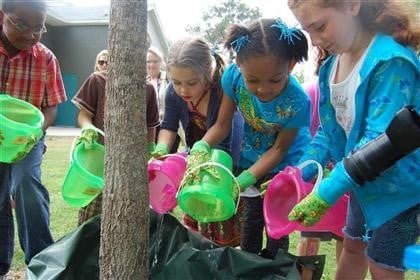How The City of Norfolk, VA Revitalized the Natural Environment
By NRC on April 22, 2016

- By Angelica Wedell -
The City of Norfolk, VA sparkles in the reflections of its surrounding waters, lit with environmental sustainability in mind.
Since U.S. Colonial years, Norfolk has been known for its rich history, culture and natural beauty. Today, Norfolk is dedicated to protecting and preserving the environment it shares with the rest of the Hampton Roads region.
The City has followed a vision to be “a premiere waterfront community that creates a positive, regenerative effect on its environment, avoids detrimental environmental impacts, and thrives economically and culturally.” And Norfolk’s residents recognized their city’s efforts and successes in preserving and protecting the natural environment.
In 2015, Norfolk, VA won a Voice of the People (VOP) Award for Transformation in Natural Environment. Presented by National Research Center (NRC) and the International City/County Management Association (ICMA), these awards are based on resident responses from The National Citizen SurveyTM (The NCSTM). Citizens gave their city exceptional ratings for the natural environment – ratings even higher than those reported previously.
Pictured: City of Norfolk, VA receives VOP award
Why Norfolk, VA won the 2015 Voice of the People Award for Transformation in Natural Environment
Collaboration
In 2011, Norfolk began collaborating with businesses and community partners to better care for the region’s earth and water. Organizations like Keep Norfolk Beautiful (KNB), Norfolk Environmental Commission and Friends of Norfolk’s Environment helped the City with large scale clean-up, recycling and public outreach projects (like Clean the Bay Day). Other programs involved residents, businesses and schools – recognizing citizens for taking measures at home to protect waterways (like reducing pesticide usage and choosing to plant native flora).
Pictured: Community garden. Courtesy City of Norfolk, VA.
Energy Efficiency
Several environment-friendly initiatives were deployed, including a comprehensive Coastal Resilience Plan (to address potential flooding concerns). And multiple new city and school facilities were built Leadership in Energy & Environmental Design (LEED) certified. Energy use from existing buildings were reduced; the Energy Utilization Index dropped from 95 to 75 KBTUs per square foot from 2013 to 2015.
Pictured: Slover Library, LEED certified. Courtesy City of Norfolk, VA
Improving the Environment
The City also made efforts to improve the natural environment itself. To expand the tree canopy, Norfolk established programs like Living Legacy Grove and planted more than 200 trees. Residents helped by planting native trees granted to them by the NeighborWoods program. Elizabeth River Project volunteers worked to restore the oyster reef, placing more than 30,000 baby oysters on a new two-acre reef.
Pictured: Kids planting tree with Living Legacy Groves. Courtesy City of Norfolk, VA
Public Awareness
Norfolk involved residents at every opportunity, from recognition programs to public clean-up projects. AskHRgreen.org was created as a Web hub for all 17 local governments in the Hampton Roads region. “The idea was to develop a central, go-to resource for everything green,” the website states. Tips on everything from recycling to keeping waterways free of debris can be found there.
Norfolk’s environmental goals have been further assisted by the 100 Resilient Cities Network, created by the Rockefeller Foundation. The City receives support and resources to better “recover, persist or even thrive amid disruption.”
Pictured: Pocket wetland before and after. Courtesy City of Norfolk, VA
All of these plans, strategies and initiatives have put Norfolk, VA in a solid position to sustain the environment for the long-haul. Community outreach efforts are expanding, and the City intends to continue the eco-friendly work that has been started.
Related Articles
Popular posts
Sign-up for Updates
You May Also Like
These Related Stories

How Ashland Transformed the Natural Environment By Increasing Open Spaces

Recognizing the 2015 Voice of the People Award Winners







